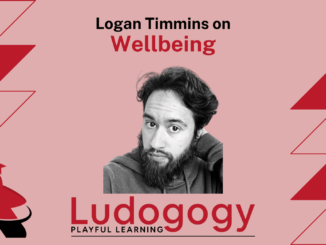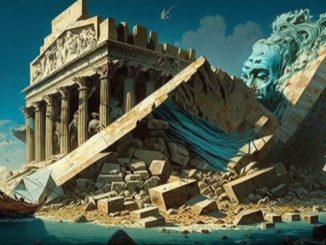
- Ordinary World – What was the situation before the journey began?
Joseph Campbell was born in White Plains, New York in 1904 into an upper-middle-class Irish Catholic family. His father was a hosiery importer and wholesaler. While he was still a child his family moved to New Rochelle, New York.
- Call to Adventure – What were the triggers which started the journey?
He attended Columbia University, where he graduated with a Bachelor of Arts in English Literature and later a Masters in Medieval Literature
- Refusal of the Call – Was there a reluctance to start the journey? What doubts or fears might have made the hero hesitate to start the journey?
But this was only after he had already studied Biology and Mathematics at Dartmouth College, where he was also an accomplished athlete. His transfer to Columbia occurred when he realised that he preferred the Humanities.
- Meeting the Mentor. What were the inspirations, people or organisations, which helped the hero to continue with the journey?
In 1924, during a sea journey, returning from a family trip to Europe, he met the messiah elect of the Theosophical Society, Jiddu Krishnamurti. The discussions they had on Indian philosophy, awakened an interest in Hindu and Indian thought..
- Crossing the Threshold. What happened when the decision was made to start the journey? Who witnessed it? What do you think the experience felt like?
On returning to Columbia University in 1929, Campbell wanted to add the study of Sanskrit and modern art to his research into medieval literature. When this was refused, Campbell withdrew from graduate studies.
- Test, Allies and Enemies – What obstacles were faced in the early days? Who or what stood in the way of progress, and who or what helped the hero to overcome difficulties to continue the journey?
During the Great Depression, Campbell lived for five years in a rented shack in Woodstock. He undertook a punishing schedule of independent study “I would divide the day into four three-hour periods, of which I would be reading in three of the three-hour periods, and free one of them … I would get nine hours of sheer reading done a day. And this went on for five years straight.”
- The Reward. What were the rewards and the positive outcomes?
Campbell developed the concept of the Monomyth, which regards all mythic narratives as variations on a theme of one great story. Campbell’s observations were that there are recognisable similarities between most great myths, regardless of time or location The central pattern most studied by Campbell is often referred to as the Hero’s Journey.
- The Approach. How did the hero prepare for a major challenge that has been faced in the journey?
Campbell borrowed the term ‘Monomyth’ from Finnegan’s Wake by James Joyce, whose work he greatly admired. He also drew heavily from the work of Carl Jung, making use of archetypes and terms such as anima/animus.
- The Road Back – Re-crossing the threshold into the ‘ordinary world’. How had the hero changed as a result of the experience?
Since his college days and until the 1940s, Joseph Campbell had written fiction. Many of these stories were based on the mythic themes he was discussing in his classes at Sarah Lawrence, where he had been teaching since 1934. Eventually these ideas made their way from fiction to non-fiction.
- The Resurrection – How were these changes celebrated or noted by the hero and others?
Originally titled How to Read a Myth, The Hero with a Thousand Faces was published in 1949. It is his most well-known work. The book argues that hero stories such as Krishna, Buddha, Apollonius of Tyana, and Jesus all share a similar underlying mythological narrative.
- Return with the Elixir – What have been the ongoing (and very practical) benefits to the world of the hero having taken this journey?
George Lucas was the first Hollywood filmmaker to credit Campbell’s influence. When the first Star Wars film was released in 1977, Lucas claimed that the story was partly inspired by The Hero with a Thousand Faces. Later reprints of Campbell’s book featured a cover image of Luke Skywalker, reinforcing this connection. Lucas discusses this influence at great length in the authorized biography of Joseph Campbell, A Fire in the Mind.
This is the story of Joseph Campbell, told using the narrative structure he is famed for discovering, The Hero’s Journey (minus part 8 – Ordeal, death and rebirth). This is probably what most people think of when they hear the term ‘narrative structure’ and it is widely used from works of fiction to corporate presentations.
Hero’s Journey template download
The Touchstone Structure

However, the Hero’s Journey is not the only structure one could use.
In The Touchstone, you introduce a single image/moment of decision or tension and present it with a minimum of context. In essence, you’re dumping the audience into the middle of a situation without much of a sense of where they are or why.
With that image or moment established as a touchstone, you backtrack to fill the image and place it in context. What brought the main character to this moment? What is at stake?
“So there I was, standing in front of my classmates, facing an audience of 30 people who I knew really well, scared of looking a fool. Then someone asked me a question about one of Jane Austen’s other novels. I was paralysed with fear. I had nothing to say. This all started when I woke up in a cold sweat in the early hours of Monday morning and realised that I’d forgotten my Jane Austen presentation was due and that I had literally six hours to pull it together – so long as I stayed up ALL NIGHT. I couldn’t face the lack of sleep, or admitting to my teacher that I’d forgotten – again, so in the end I spent a couple of hours with the Letts study notes for Pride and Prejudice. This was in the far-off days before the Internet, and that was the only Austen-related information resource in the house. I spent another hour or so copying Austen’s picture from the back cover – blown up to four times original size. When I fell into bed at 4 am, I thought I’d done enough to get away with it. I nearly did too, until Liz Davenport decided to show off her own knowledge of “Sense and Sensibility”. So now here I am, opening and closing my mouth like a goldfish, cursing my bad memory again.”
Wagon Wheel Structure

This structure works well when you want to examine a person, relationship, or theme from several different perspectives.
Let’s say you want to show how many different influences come together to support the transformation of an individual. A hero’s journey narrative would centre on the individual’s point of view. The Wagon Wheel places the individual at the centre of several different narratives.
Like the Touchstone Structure, this one is achronological. The contributing narratives may have occurred at different times and involve different characters. In fact, while their stories are significant to the central theme or character, the people who drive the contributing narrative may not even be personally connected with the central story.
“When I was playing the part of Nancy in my school’s production of “Oliver!” – up there singing on the stage, what the audience didn’t see was the set of coincidences which had led to that moment, and the work and support of so many other people. My friend who had been supposed to be Nancy had unexpectedly lost her voice and had passed the baton to me, not because I was the understudy, but because I had helped her to practise so I knew all the songs and lines. I myself had only had time to do this because a family party had been postponed, due to a cousin having Chicken Pox. I’d never done anything like this before, and wouldn’t have known where to start, if my other friend hadn’t taken the time to show me – in detail. The experience was exhilarating, but I’d never have been able to pull it off without the wonderful feedback I got from all those members of my family who had to sit through me trying dozens of different ‘Cockney’ accents and versions of Nancy’s moves on stage.”
- James Bore – The Ransomeware Game - 13th February 2024
- Ipsodeckso – Risky Business - 23rd January 2024
- Review – Luma World Games - 15th December 2023





Be the first to comment